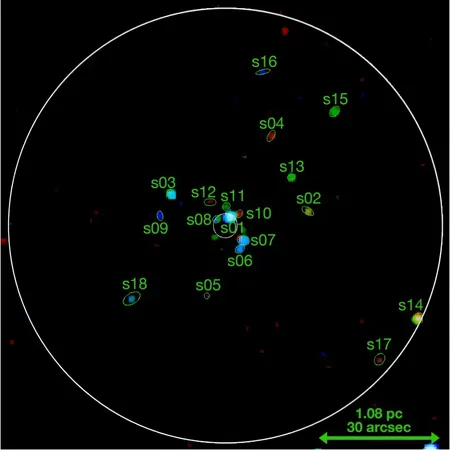
Unveiling the Mysteries of NGC 6528: The First X-ray Study of a Galactic Gem
2025-08-20
Author: Siti
Astronomers Finally Explore NGC 6528 in X-ray Spectacular!
In a groundbreaking discovery, astronomers have conducted the first-ever X-ray study of globular cluster NGC 6528, shedding light on the hidden gems lurking within this astronomical powerhouse! Utilizing data from NASA's Chandra spacecraft, the researchers have unveiled significant details about this intriguing cluster, positioned an astounding 25,800 light years away from Earth.
What Makes NGC 6528 Special?
NGC 6528 isn’t just any globular cluster—it's one of the most metal-rich collections of stars in our galaxy, boasting an impressive age of around 11 billion years! These clusters, composed of hundreds of thousands to millions of stars, are crucial for understanding the cosmic events surrounding early galaxy formation, particularly during periods of intense star birth.
Meet the Discoverers: Bernard Leal and Team
Led by Bernard Leal from Michigan State University, a dynamic team of astronomers has ventured deep into the heart of NGC 6528. Their X-ray analysis, complemented by data from both the Hubble Space Telescope and the Gaia satellite, has opened a new chapter in globular cluster research.
A Stunning Array of X-ray Sources Revealed!
Using Chandra's Advanced CCD Imaging Spectrometer, the team identified a total of 18 distinct X-ray sources (labeled s01 through s018) within the cluster's half-light radius. Among these, s01 stood out as the brightest, showcasing an astonishing luminosity of 100 nonillion erg/s—a beast among X-ray sources! Notably, it displays remarkable long-term variability, suggesting it may be part of a compact binary system.
The Mysterious Sources: More Than Meets the Eye!
The second brightest source, s14, emitted approximately 46 nonillion erg/s of relatively soft X-ray radiation, hinting that it could be a field star rather than a cluster member. The researchers have classified the majority of these X-ray sources as cataclysmic variables (CVs) and active binaries (ABs), but they’ve left the door open for the possibility of some sources being quiescent low-mass X-ray binaries (LMXBs).
Conclusions and Future Directions!
The findings from this study reveal fascinating insights about NGC 6528. The researchers concluded that while the high metallicity typically enhances the presence of X-ray binaries, the cluster's advanced dynamical state appears to limit the overall population of X-ray sources.
With further observations—especially focusing on time-series optical and near-infrared photometry—the astronomers hope to refine the classification of these mysterious X-ray sources. The universe may be full of surprises, and NGC 6528 is just the beginning!
Stay tuned for more cosmic discoveries!



 Brasil (PT)
Brasil (PT)
 Canada (EN)
Canada (EN)
 Chile (ES)
Chile (ES)
 Česko (CS)
Česko (CS)
 대한민국 (KO)
대한민국 (KO)
 España (ES)
España (ES)
 France (FR)
France (FR)
 Hong Kong (EN)
Hong Kong (EN)
 Italia (IT)
Italia (IT)
 日本 (JA)
日本 (JA)
 Magyarország (HU)
Magyarország (HU)
 Norge (NO)
Norge (NO)
 Polska (PL)
Polska (PL)
 Schweiz (DE)
Schweiz (DE)
 Singapore (EN)
Singapore (EN)
 Sverige (SV)
Sverige (SV)
 Suomi (FI)
Suomi (FI)
 Türkiye (TR)
Türkiye (TR)
 الإمارات العربية المتحدة (AR)
الإمارات العربية المتحدة (AR)